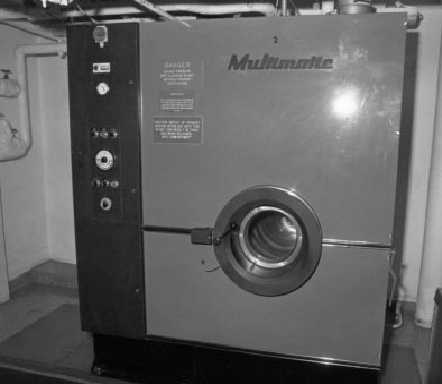| |
Inhalation
The initial effects of overexposure due to
inhaling the solvent will be nose and eye
irritation, lightheadedness, dizziness, mental
dullness, and uncoordination. If these symptoms
are present, the affected person should be
removed from the contaminated area to fresh air.
Once the person is removed to an area where
there is fresh air, recovery is usually rapid, If
recovery is not rapid, symptoms worsen, or
breathing has stopped, start artificial respiration
and obtain medical attention at once.
Skin Contact
Perchloroethylene is an excellent solvent and
because of this it removes natural oils from the
skin. Prolonged and/or repeated contact with the
liquid may produce rough and dry skin which is
more susceptible to infections. Exposures that are
infrequent or of short duration should have no
adverse effects; however, in some persons a mild
irritation, consisting of a mild temporary redness,
may occur.
There is little practical hazard from the
standpoint
of
skin
absorption.
Although
perchloroethylene can penetrate the human skin
in toxic quantities following massive or prolonged
exposure, there is little absorption through the
skin under normal conditions of use. Personnel
whose skin comes in contact with the solvent
should wash the affected area with large amounts
of warm water and soap. Any contaminated
clothes should be removed and dry cleaned.
Eye Contact
While the danger of serious injury is little or
none if perchloroethylene is splashed into the
eyes, a great deal of pain and redness may result.
The eyes should always be flushed or rinsed with
cool water immediately after contact and
immediate medical attention sought.
STOWAGE OF THE DRY-CLEANING
SOLVENT
NSTM S9086-WK-STM-010 of Sept 87
contains stowage requirements for chlorinated
cleaning solvents. Chapter 670 includes the
stowage, handling, and disposal of hazardous
general-use
consumables.
Do
not
stow
tetrachloroethylene (perchloroethylene) near heat
sources, or allow contact with hot surfaces. Do
48.89
Figure 6-2.-Multimatic dry-cleaning machine.
6-6
|

